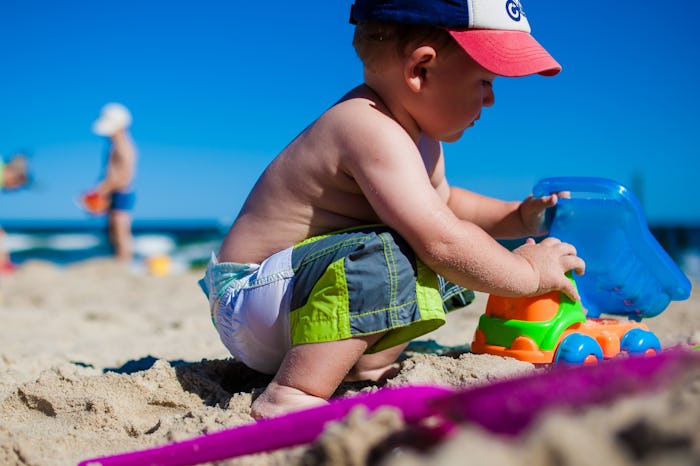One of my favorite moments to observe my daughter is when she is quietly playing by herself. She prepares her baby dolls a pretend dinner of eggs and pickles, or sings songs while coloring. It’s fun for me to see her developing brain in action, and it doesn’t hurt that it also buys me some time to get a few things done. But what are the benefits to this solo time? Knowing how to teach your child to play alone should be on your list of to-dos, and for good reason.
Rachel Robertson, vice president for education and development at Bright Horizons, says it’s important to keep things flexible. "Children are naturally drawn to play, and they can take most open-ended material and begin to play independently," she tells Romper in an email interview. "Open-ended materials can be items such as blocks, boxes, building materials, dolls, puppets, leaves, sticks, and other natural materials. As opposed to toys that only have a single purpose, children use open-ended materials over and over in new ways."
Robertson says making time for play is also key by providing ample space and time for them to explore. "Adults are often tempted to direct or rush children’s play, but the best thing an adult can do is give children time, space, and materials to use their imaginations," she says. "Most importantly, remember to respect play as the way children hypothesize and experiment, apply learning and ideas, problem-solve, make decisions, think critically, and innovate. When adults interfere, they interrupt these amazing opportunities."
Robertson says an adult’s role during independent play time is to introduce new materials, like sea shells or cardboard tubes. You can also ask open-ended questions that prompt reflection and thinking, such as "What’s happening?" or "Tell me about …"
Sometimes encouraging independent play is as simple as letting kids get a little bored, says Dr. Thomai Dion of TD The Science Mom in an email interview with Romper. "Having activities planned, playdates scheduled, and events to attend are wonderful, but allowing for imaginative play during a quiet time is also critically important," she says.
Dion recommends setting aside a day where no extracurricular activities are scheduled, instead providing hands-on toys, such as building blocks, clay, or crayons. "Encourage your little one to dive in," she adds. "I would also strongly suggest not using screens during this time. Let the child dictate how their play should occur and not what an app has outlined."
My unprofessional recommendation for parents during this time? Take advantage. Whether you send out a few work emails or simply sit with a cup of tea, enjoy it. It won’t last long — promise.
